توضیحات محصول
محلول استخراج RNA-ترایزول|TRIzol Reagent
KIAzol Reagent
Cat. No: FPLR034.0025
WHAT DOES KIAZOL REAGENT DO?
KIAzol Reagent solution (also sold as TRIzol) is a mixture of guanidine thiocyanate and phenol in a monophase solution that is used for the isolation of DNA, RNA and protein from biological samples of human, animal, plant, yeast, bacteria, and virus. It inhibits RNase activity. KIAzol Reagent is used to homogenize the biological sample from which RNA, DNA or proteins are extracted.
PROCEDURES
Sample Preparation
1A. Tissue:
Homogenize tissue samples in KIAzol Reagent (1 ml per 50–100 mg of tissue) in a Polytron or other appropriate homogenizer.
![]() Note: If minimal shearing of the DNA is desired, use a loosely fitting homogenizer, not a Polytron (see DNA Isolation, step 3, note b). The volume of the tissue should not exceed 10% of the volume of the KIAzol Reagent.
Note: If minimal shearing of the DNA is desired, use a loosely fitting homogenizer, not a Polytron (see DNA Isolation, step 3, note b). The volume of the tissue should not exceed 10% of the volume of the KIAzol Reagent.
1B. Monolayer cells:
Lyse cells directly on the culture dish. Use 1 ml of the KIAzol Reagent per 10 cm2 of glass culture plate surface area. After addition of the reagent, the cell lysate should be passed several times through a pipette to form a homogenous lysate.
![]() Note: KIAzol Reagent is not compatible with plastic culture plates.
Note: KIAzol Reagent is not compatible with plastic culture plates.
1C. Suspension cells:
Isolate cells by centrifugation and then lyse in KIAzol Reagent by repeated pipetting. One ml of the reagent is sufficient to lyse 5–10 × 106 animal, plant, or yeast cells, or 107 bacterial cells.
![]() Note:
Note:
- If samples have a high content of fat, protein, polysaccharides, or extracellular material such as muscle, fat tissue, and tuberous parts of plants an additional step may be needed. After homogenization, centrifuge the homogenate at 12,000 × g for 10 minutes at 2–8 °C to remove the insoluble material (extracellular membranes, polysaccharides, and high molecular mass DNA). The supernatant contains RNA and protein. If the sample had a high fat content, there will be a layer of fatty material on the surface of the aqueous phase that should be removed. Transfer the clear supernatant to a fresh tube and proceed with step 2. Recover the high molecular mass DNA from the pellet by following DNA Isolation, steps 2 and 3.
- Some yeast and bacterial cells may require a homogenizer.
- After the cells have been homogenized or lysed in KIAZOL Reagent, samples can be stored at –70 °C for up to 1 month.
Phase Separation: To ensure complete dissociation of nucleoprotein complexes, allow samples to stand for 5 minutes at room temperature. Add 0.1 ml of 1‑bromo-3‑chloropropane or 0.2 ml of chloroform (see Phase Separation, note a and b) per ml of KIAZOL Reagent used. Cover the sample tightly, shake vigorously for 15 seconds, and allow to stand for 2–15 minutes at room temperature. Centrifuge the resulting mixture at 12,000 × g for 15 minutes at 2–8 °C. Centrifugation separates the mixture into 3 phases: a red organic phase (containing protein), an interphase (containing DNA), and a colorless upper aqueous phase (containing RNA).
![]() Note:
Note:
- 1-Bromo-3-chloropropane is less toxic than chloroform and its use for phase separation decreases the possibility of contaminating RNA with DNA.
- The chloroform used for phase separation should not contain isoamyl alcohol or other additives.
- For isolation of poly A+ fraction from the aqueous phase see Appendix I.
RNA ISOLATION OR EXTRACTION
- Transfer the aqueous phase to a fresh tube and add 0.5 ml of 2-propanol per ml of KIAZOL Reagent used in Sample Preparation, step 1 and mix. Allow the sample to stand for 5–10 minutes at room temperature. Centrifuge at 12,000 × g for 10 minutes at 2–8 °C. The RNA precipitate will form a pellet on the side and bottom of the tube.
![]() Note: Store the interphase and organic phase at 2–8 °C for subsequent isolation of the DNA and proteins.
Note: Store the interphase and organic phase at 2–8 °C for subsequent isolation of the DNA and proteins.
- Remove the supernatant and wash the RNA pellet by adding a minimum of 1 ml of 75% ethanol per 1 ml of KIAZOL Reagent used in Sample Preparation, step 1. Vortex the sample and then centrifuge at 7,500 × g for 5 minutes at 2–8 °C.
![]() Note:
Note:
- If the RNA pellets float, perform the wash in 75% ethanol at 12,000 × g.
- Samples can be stored in ethanol at 2–8 °C for at least 1 week and up to 1 year at –20 °C.
- Briefly dry the RNA pellet for 5–10 minutes by air-drying or under a vacuum. Do not let the RNA pellet dry completely, as this will greatly decrease its solubility. Do not dry the RNA pellet by centrifugation under vacuum. Add an appropriate volume of formamide, water, or a 0.5% SDS solution to the RNA pellet. To facilitate dissolution, mix by repeated pipetting with a micropipette at 55–60 °C for 10–15 minutes.
![]() Note:
Note:
- Final preparation of RNA is free of DNA and proteins. It should have a A260 to A280 ratio of ≥1.7.
- Typical yields from tissues (mg RNA/mg tissue): liver, spleen, 6‑10 mg; kidney, 3‑4 mg; skeletal muscle, brain, 1‑1.5 mg; placenta, 1‑4 mg.
- Typical yields from cultured cells (mg RNA/106 cells): epithelial cells, 8‑15 mg; fibroblasts, 5‑7 mg.
- Ethidium bromide staining of RNA in agarose gels visualizes two predominant bands of small (2 kb) and large (5 kb) ribosomal RNA, low molecular mass (0.1–0.3 kb) RNA, and discrete bands of high molecular mass (7–15 kb) RNA.
DNA ISOLATION OR EXTRACTION
- Carefully remove the remaining aqueous phase overlaying the interphase and discard. To precipitate the DNA from the interphase and organic phase, add 0.3 ml of 100% ethanol per 1 ml of KIAZOL Reagent used in Sample Preparation, step 1. Mix by inversion and allow to stand for 2–3 minutes at room temperature. Centrifuge at 2,000 × g for 5 minutes at 2–8 °C.
![]() Note: Removal of the remaining aqueous phase before DNA precipitation is a critical step for the quality of the isolated DNA.
Note: Removal of the remaining aqueous phase before DNA precipitation is a critical step for the quality of the isolated DNA.
- Remove the supernatant and save at 2–8 °C for protein isolation. Wash the DNA pellet twice in 0.1 M Trisodium citrate, 10% ethanol solution. Use 1 ml of wash solution for every 1 ml of KIAZOL Reagent used in Sample Preparation, step 1. During each wash, allow the DNA pellet to stand (with occasional mixing) for at least 30 minutes. Centrifuge at 2,000 × g for 5 minutes at 2–8 °C. Resuspend the DNA pellet in 75% ethanol (1.5–2 ml for each ml KIAZOL Reagent) and allow to stand for 10–20 minutes at room temperature.
![]() Note:
Note:
- Important: Do not to reduce the time samples remain in the washing solution. Thirty minutes is the absolute minimum time for efficient removal of phenol from the DNA.
- If pellet contains >200 mg of DNA or large amounts of non‑DNA material, an additional wash in 0.1 M Trisodium citrate, 10% ethanol solution is required.
- Samples suspended in 75% ethanol can be stored at 2–8 °C for several months.
- Dry the DNA pellet for 5–10 minutes under a vacuum and dissolve in 8 mM NaOH with repeated slow pipetting with a micropipette. Add sufficient 8 mM NaOH for a final DNA concentration of 0.2–0.3 mg/mL (typically 0.3–0.6 ml to the DNA isolated from 50–70 mg of tissue or 107 cells). This mild alkaline solution assures complete dissolution of the DNA pellet. Centrifuge at 12,000 × g for 10 minutes to remove any insoluble material and transfer the supernatant to a new tube.
![]() Note:
Note:
- A viscous supernatant indicates the presence of high molecular mass DNA.
- The size of the DNA will depend on the force exerted during homogenization. Avoid using a Polytron homogenizer.
- Samples dissolved in 8 mM NaOH can be stored at 2–8 °C overnight. For long term storage, adjust the pH value to between 7 and 8 and supplement with EDTA (final concentration 1 mM).
- To determine DNA concentration, remove an aliquot, dilute with water, and measure the A260. For double stranded DNA, 1 A260 unit/ml = 50 µg/ml.
- To calculate cell number, assume the amount of DNA for 106 diploid cells of human, rat, and mouse equals 7.1 µg, 6.5 µg, and 5.8 µg, respectively.
- Typical yields from tissues (µg DNA/mg tissue): liver, kidney, 3–4 µg; skeletal muscle, brain, and placenta, 2–3 µg.
- Typical yields from cultured human, rat, and mouse cells: 5–7 µg DNA/106 cells.
TO AMPLIFY DNA BY PCR
After dissolving in 8 mM NaOH, adjust to pH 8.4 using HEPES (add 86 µL of 0.1 M HEPES, free acid/ml of DNA solution). Add sample (generally 0.1–1 µg) to PCR mix and follow PCR protocol.
TO DIGEST DNA WITH REStriCTION ENZYMES
Adjust the pH of the DNA solution to that needed for the restriction enzyme digestion using HEPES, or dialyze samples against 1 mM EDTA, pH 7–8. Allow the restriction enzyme digestion to continue for 3–24 hours under optimal conditions. It is recommended that 3–5 units of enzyme be used per 1 µg of DNA. Typically, 80–90% of the DNA is digested.
Protein Isolation
- Precipitate proteins (see note) from the phenol-ethanol supernatant (DNA Isolation, step 2) with 1.5 ml of 2-propanol per 1 ml of KIAZOL Reagent used in Sample Preparation, step 1. Allow samples to stand for at least 10 minutes at room temperature. Centrifuge at 12,000 × g for 10 minutes at 2–8 °C.
![]() Note: For some samples, the protein pellet may be difficult to dissolve in 1% SDS (step 3). Use this alternate procedure to correct the problem:
Note: For some samples, the protein pellet may be difficult to dissolve in 1% SDS (step 3). Use this alternate procedure to correct the problem:
- Dialyze the phenol-ethanol supernatant against 3 changes of 0.1% SDS at 2–8 °C.
- Centrifuge the dialysate at 10,000 × g for 10 minutes at 2–8 °C.
- The clear supernatant contains protein that is suitable for use in Western blotting
- Discard supernatant and wash pellet 3 times in 0.3 M guanidine hydrochloride to 95% ethanol solution, using 2 ml per 1 ml of KIAZOL Reagent used in Sample Preparation, step 1. During each wash, store samples in wash solution for 20 minutes at room temperature. Centrifuge at 7,500 × g for 5 minutes at 2–8 °C. After the 3 washes, add 2 ml of 100% ethanol and vortex the protein pellet. Allow to stand for 20 minutes at room temperature. Centrifuge at 7,500 × g for 5 minutes at 2–8 °C.
![]() Note: Protein samples suspended in 0.3 M guanidine hydrochloride to 95% ethanol solution or 100% ethanol can be stored for 1 month at 2–8 °C or 1 year at –20 °C.
Note: Protein samples suspended in 0.3 M guanidine hydrochloride to 95% ethanol solution or 100% ethanol can be stored for 1 month at 2–8 °C or 1 year at –20 °C.
- Dry protein pellet under a vacuum for 5–10 minutes. Dissolve pellet in 1% SDS aided by working the plunger of micropipette with tip in the solution. Remove any insoluble material by centrifugation at 10,000 × g for 10 minutes at 2–8 °C. Transfer supernatant to a new tube. The protein solution should be used immediately for Western blotting or stored at –20 °C.
![]() TROUBLESHOOTING GUIDE
TROUBLESHOOTING GUIDE
- RNA Isolation:
Low yield may be due to:
- incomplete homogenization or lysis of samples.
- the final RNA pellet may not have been completely dissolved.
If the A260 to A280 ratio is <1.65:
- the amount of sample used for homogenization may have been too small.
- samples may not have been allowed to stand at room temperature for 5 minutes after homogenization.
- there may have been contamination of the aqueous phase with the phenol phase.
- the final RNA pellet may not have been completely dissolved.
If there is degradation of the RNA:
- the tissues may not have been immediately processed or frozen after removing from the animal.
- the samples used for isolation or the isolated RNA preparations may have been stored at –20 °C instead of –70 °C as specified in the procedure.
- cells may have been dispersed by trypsin digestion.
- aqueous solutions or tubes used for procedure may not have been RNAse‑free.
- formaldehyde used for the agarose gel electrophoresis may have had a pH value <3.5.
If there is DNA contamination:
- the volume of reagent used for the sample homogenization may have been too small.
- samples used for the isolation may have contained organic solvents (ethanol, DMSO), strong buffers or alkaline solution.
- DNA Isolation:
Low yield may be due to:
- incomplete homogenization or lysis of samples.
- the final DNA pellet may not have been completely dissolved.
If the A260 to A280 ratio is <1.70:
- phenol may not have been sufficiently removed from the DNA preparation. Try one more wash of the DNA pellet with the 0.1 M Trisodium citrate, 10% ethanol solution.
If there is degradation of the DNA:
- the tissues may not have been immediately processed or frozen after removing from the animal.
- the samples used for isolation may have been stored at –20 °C instead of –70 °C as specified in the procedure.
- samples may have been homogenized with a Polytron or other high speed homogenizer.
If there is RNA contamination:
- there may have been too much aqueous phase remaining with the organic phase and interphase.
- the DNA pellet may not have been washed sufficiently with 0.1 M Trisodium citrate, 10% ethanol solution.
- Protein Isolation:
Low yield may be due to:
- incomplete homogenization or lysis of samples.
- the final protein pellet may not have been completely dissolved.
If there is degradation of the protein:
- the tissues may not have been immediately processed or frozen after removing from the animal.
If PAGE shows band deformation:
- protein pellet may not have been washed sufficiently.
تاریخچه Trizol :
Trizol محلولی شیمیایی است که به طور گسترده در استخراج DNA ، RNA و پروتئین از سلول ها مورد استفاده قرار می گیرد.
در واقع ترایزول یک محلول تک فازی از فنل و ایزوتیوسیانات گوانیدینیم است که به طور همزمان مواد بیولوژیکی را حل می کند و پروتئین را دناتوره می کند. استفاده از ترایزول در ابتدا توسط Piotr Chomczyński و Nicoletta Sacchi در سال 1987 استفاده و منتشر شد.
Trizol نام تجاری گوانیدینیوم تیوسیانات از بخش Ambion کمپانی Life Technologies و Tri-Reagent نام تجاری از کمپانی MRC است، که توسط Chomczynski تأسیس شد.
ویژگیهای Trizol:
عملکرد:
محلول ترایزول به طور ایده آل برای استخراج RNA از نمونه های بیولوژیکی مختلف طراحی شده است. pH پایین (اسیدی) Trizol جداسازی RNA از DNA و پروتئین را کنترل می کند، در حالی که pH بالا می تواند باعث جداسازی همزمان RNA و DNA شود.
نمک گوانیدینیوم موجود در ترایزول به عنوان یک عامل دناتوره کننده ی پروتئین ها عمل می کند و فنل (که معمولاً به رنگ صورتی مشخص می شود) یک ترکیب آلی است که برای استخراج اسیدهای نوکلئیک و پروتئین ها استفاده می شود.
فعالیت:
پس از انحلال و همگن شدن نمونه ها در ترایزول، RNA، DNA و پروتئین به طور متفاوت با افزودن یک معرف جداسازی فاز (کلروفرم، BCP یا BAN) استخراج می شوند. فاز آبی بالایی و شفاف عمدتاً حاوی RNA است، و فاز میانی و فاز آلی پایینی حاوی DNA، پروتئین ها و لیپیدها است. متعاقباً، RNA در فاز آبی بالایی با رسوب مبتنی بر الکل جمع آوری می شود.
پس از مراحل طولانی انکوباسیون و سانتریفیوژ، رسوب سفید حاصل حاوی RNA در محلول اتانول شسته شده، در هوا خشک شده و در بافر نهایی مجدداً محلول می شود.
خطرات بیولوژیکی:
در MDS تولید کننده ترایزول به عنوان سمیت حاد خوراکی، پوستی و استنشاقی علاوه بر خوردگی/تحریک پوست برچسب گذاری شده است. قرار گرفتن در معرض TRIzol می تواند یک خطر جدی برای سلامتی باشد و منجر به سوختگی های شیمیایی جدی، اسکار دائمی و نارسایی کلیه شود.
استفاده از Trizol باید زیر یک هود شیمیایی، با روپوش آزمایشگاهی، دستکش های نیتریل و یک پیش بند پلاستیکی انجام شود.
Trizol شرکت کیاژن فناور آریا:
محلول ترایزول کیاژن با نام KiaZol در سه حجم متفاوت 25میلی لیتری، 50میلی لیتری و 100میلی لیتری موجود است.
شما می توانید به کمک هر میلی لیتر از این محلول 1واکنش استخراج RNA ، DNA و همچنین پروتئین را از نمونه های مختلف بیولوژیکی انسانی، جانوری، گیاهی، مخمر، باکتری و ویروسی با توجه به بروشور مربوطه انجام دهید و در نهایت نوکلئیک اسید موردنظر و یا پروتئین نمونه خود را به دست آورید.
چرا ترایزول مورد نیاز خود را از شرکت کیاژن فناور آریا بخریم؟
با نگاهی ساده به جدول های زیر می توانید Trizol تولیدی کیاژن فناور آریا را با شرکت های داخلی و خارجی مقایسه کنید.
| مقایسه ترایزول 25میلی لیتری شرکت کیاژن فناور آریا با شرکت های تولیدکننده داخلی | |||
|---|---|---|---|
| نام شرکت | کیاژن فناور آریا | شرکت رقیب داخلی 1 | شرکت رقیب داخلی 2 |
| قیمت | 380000 تومان | 625000تومان | 390000 تومان |
| زمان تحویل | فوری(همان روز ثبت سفارش) | 2-3روزه | 1-2 روزه |
| کیفیت | بالا | بالا | بالا |
| مقایسه ترایزول 25میلی لیتری شرکت کیاژن فناور آریا با شرکت های معتبر خارجی | |||
|---|---|---|---|
| نام شرکت | کیاژن فناور آریا | Thermo fisher | Sigma |
| قیمت | 380000T | 1950000T=65$ | 2940000T = 98$ |
| زمان تحویل | فوری(همان روز ثبت سفارش) | 1 ماهه | 1 ماهه |
| هزینه ارسال | حداقل هزینه(بسته به مسافت) | زیاد(هزینه گمرکی علاوه بر مسافت) | زیاد(هزینه گمرکی علاوه بر مسافت) |
| سایر موارد | تضمین رعایت شرایط دمایی حمل مناسب محصول | نگرانی از رعایت شرایط دمایی و حمل مناسب محصول به علت بعد مسافت زیاد | نگرانی از رعایت شرایط دمایی و حمل مناسب محصول به علت بعد مسافت زیاد |
| کیفیت | بالا | بسیار بالا | بسیار بالا |
از Trizol کیاژن فناور آریا چه استفاده ای می شود؟
شما به وسیله محلول ترایزول کیاژن فناور میتوانید RNA، DNA و همچنین پروتئین را از نمونه های مورد نظر خود استخراج کنید. اما این محلول در اکثر واقع برای استخراج RNA استفاده می شود که میتوانید باندهای مختلف RNA را با کیفیت بالا پس از استخراج بر روی ژل مشاهده نمایید.
بررسی تخصصی
| واکنش(ری اکشن) را انتخاب کنید | 100, 50, 25 |
|---|
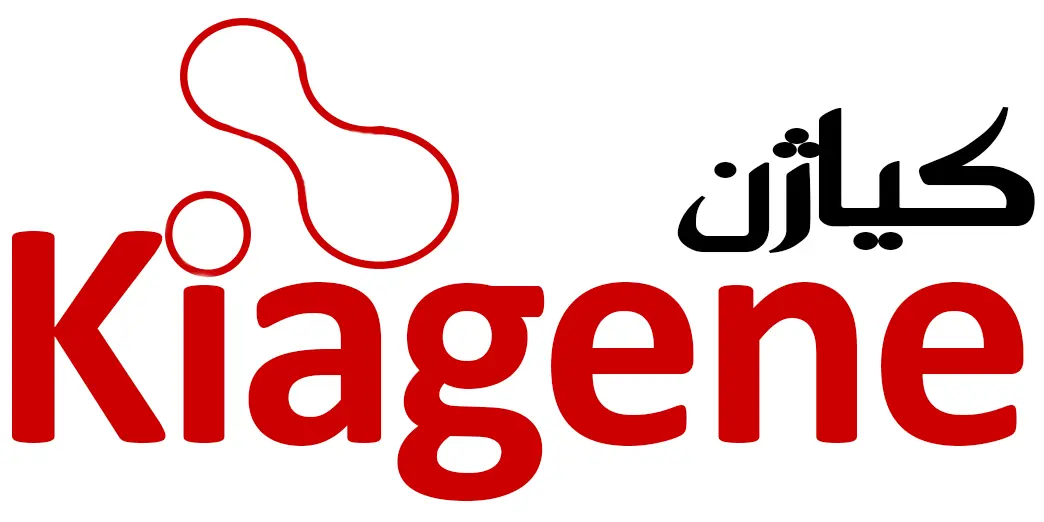
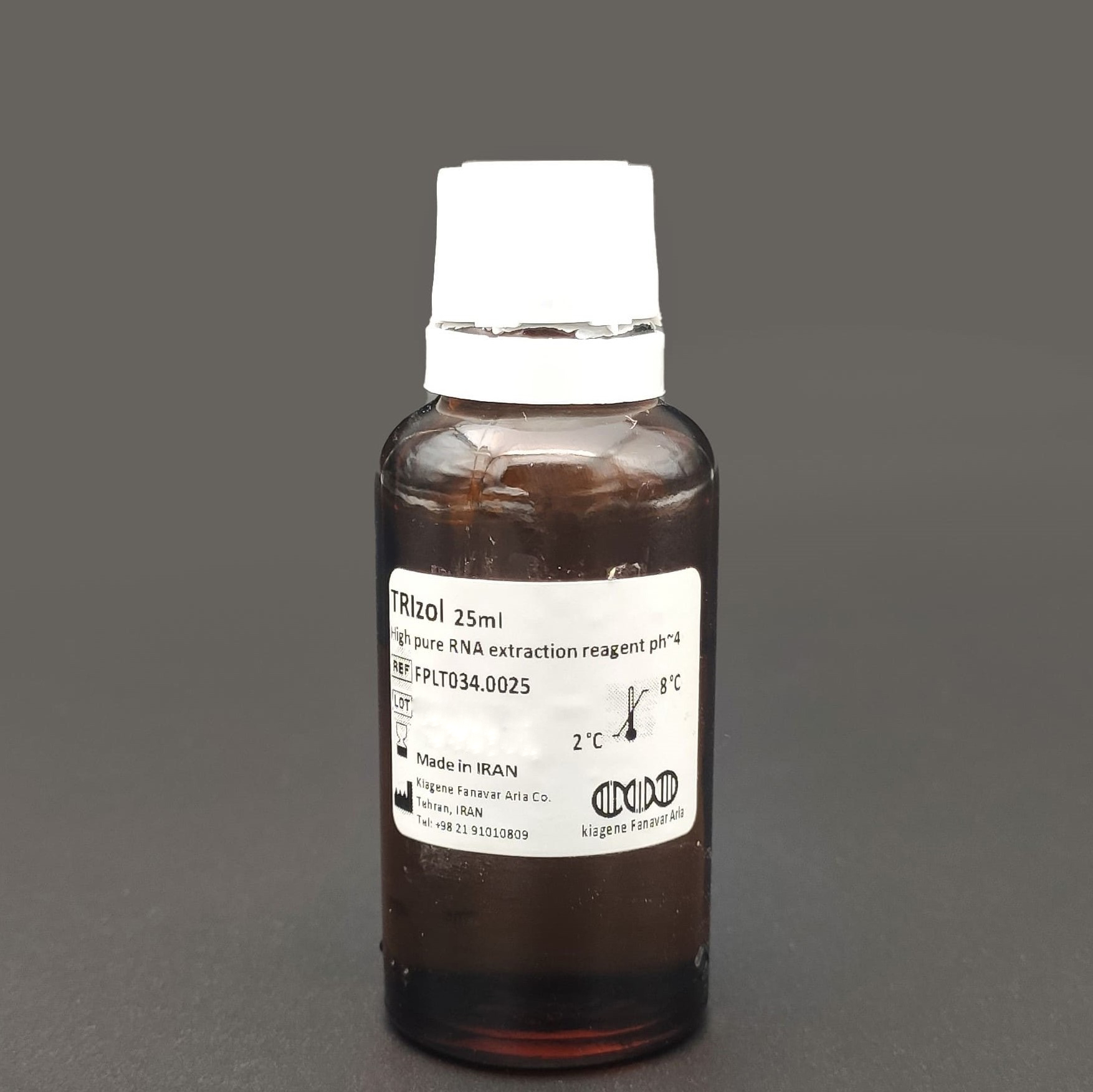




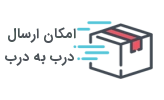




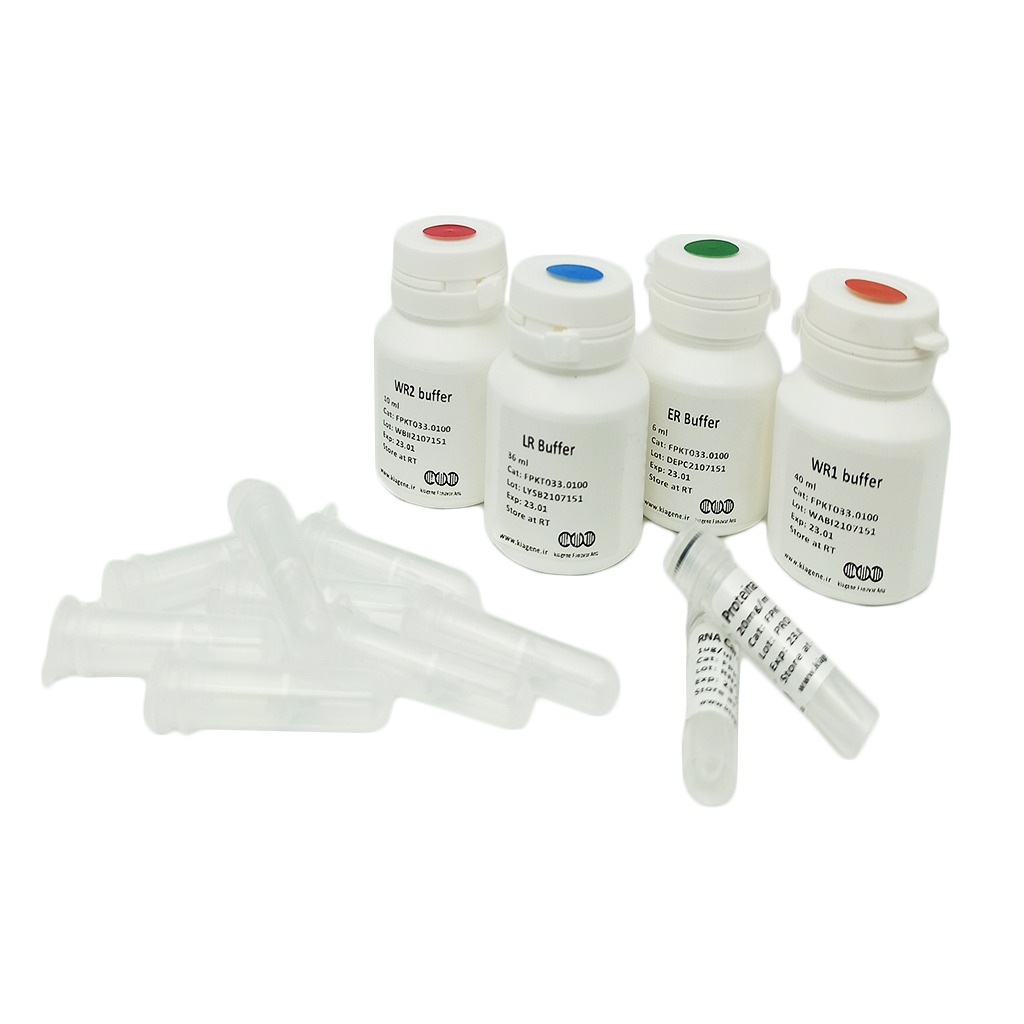
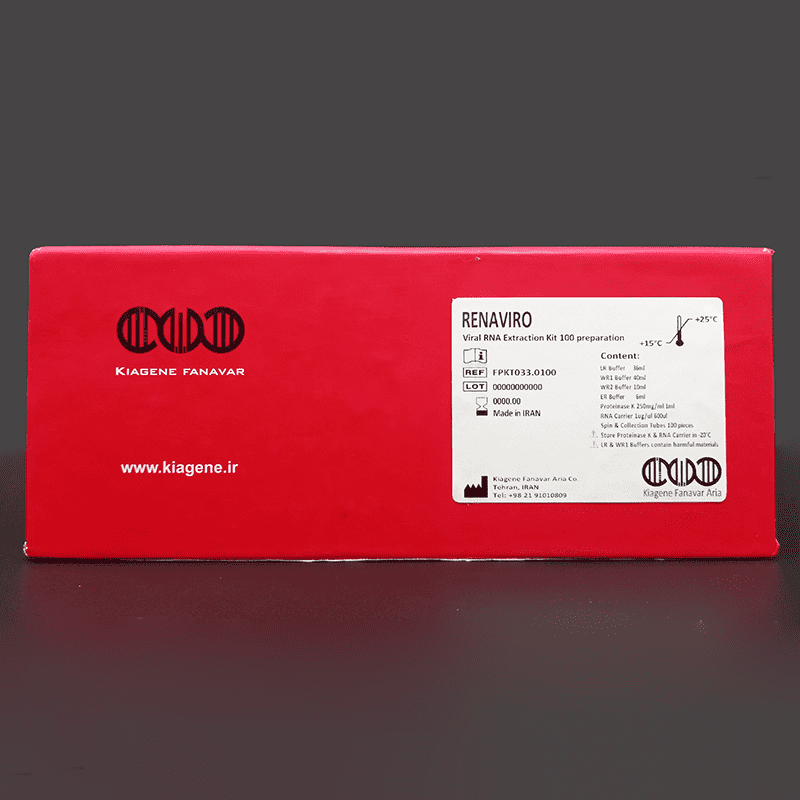

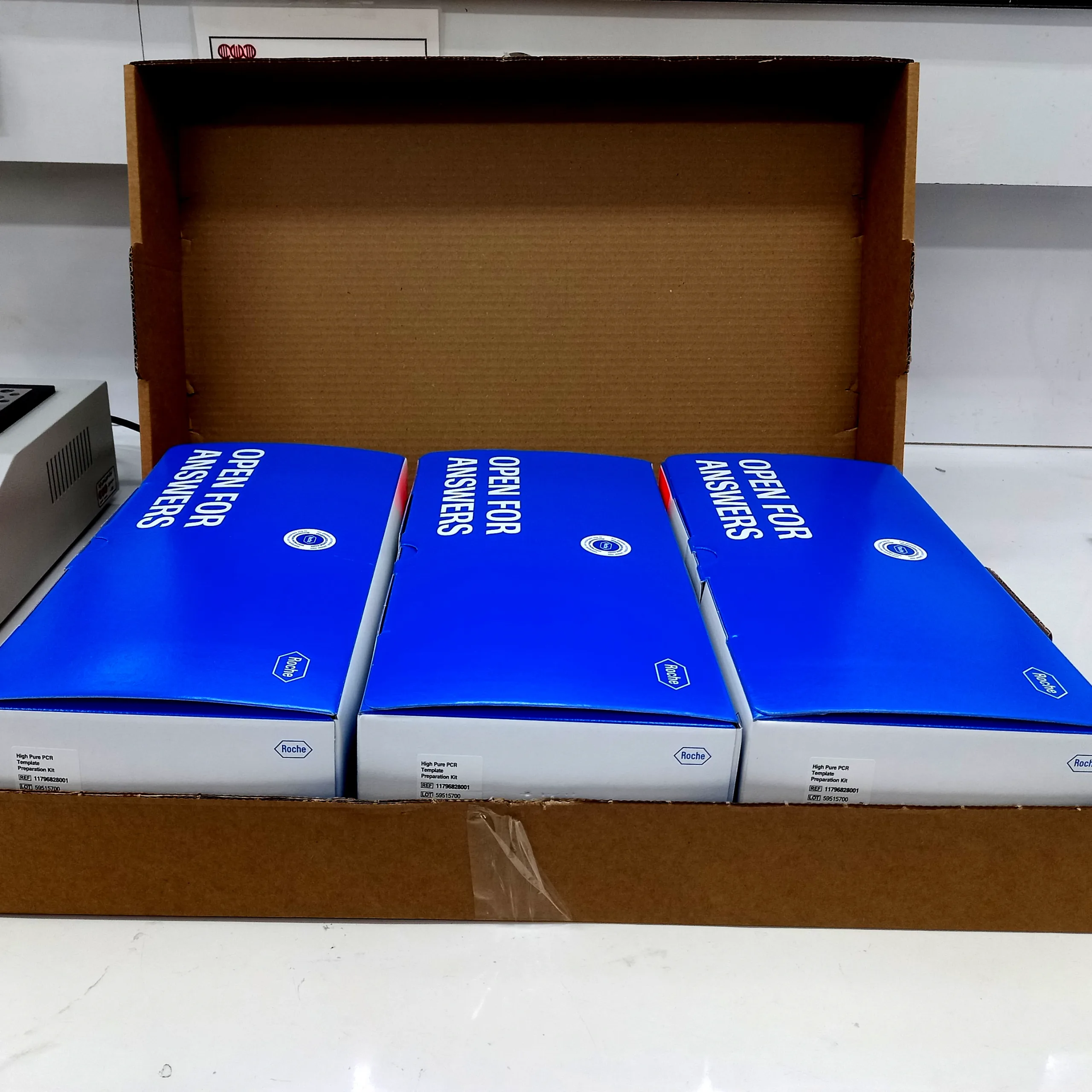
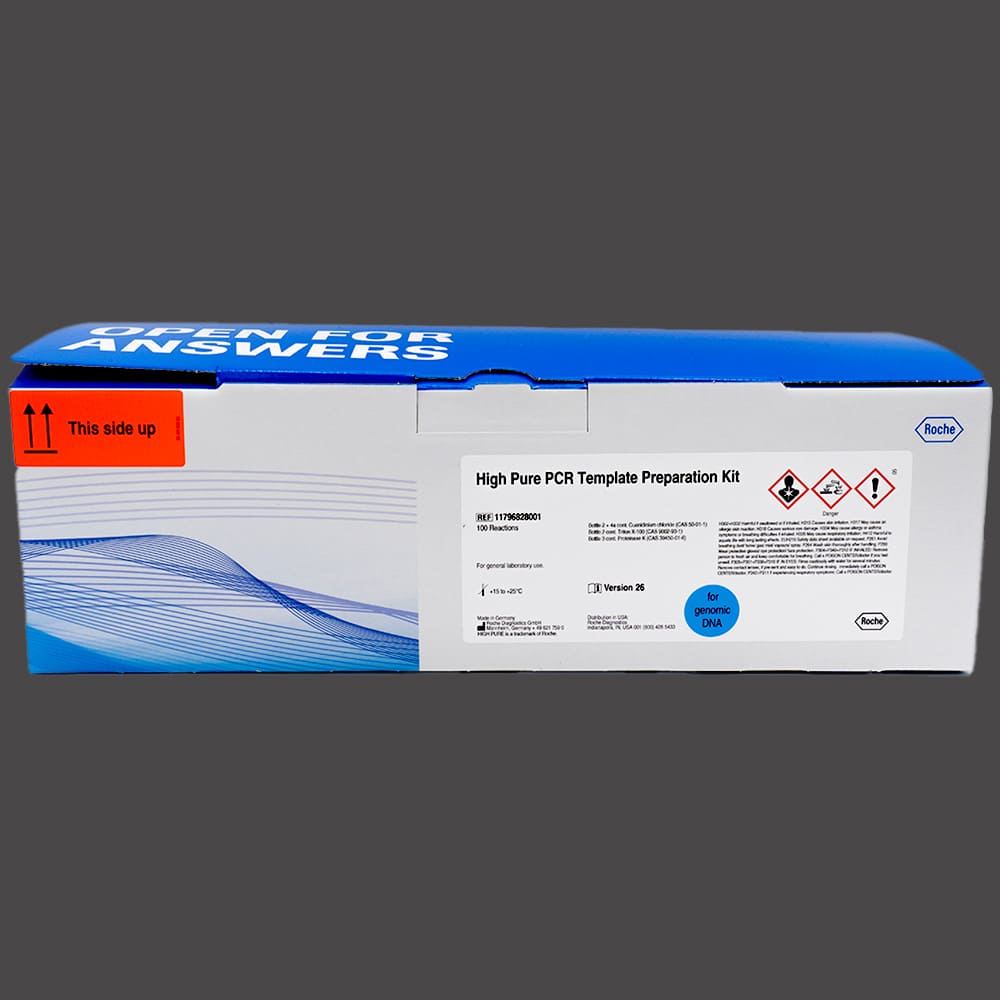
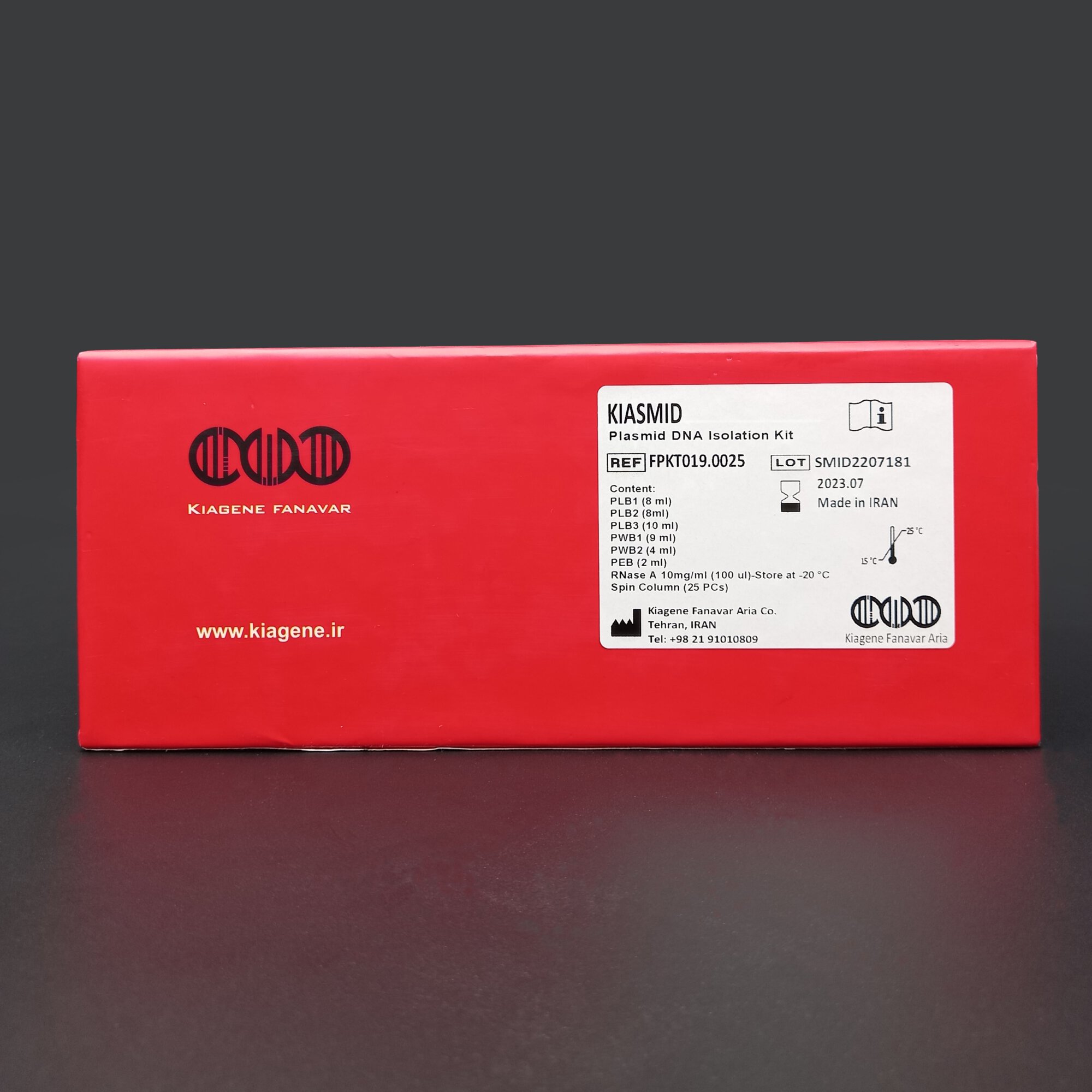
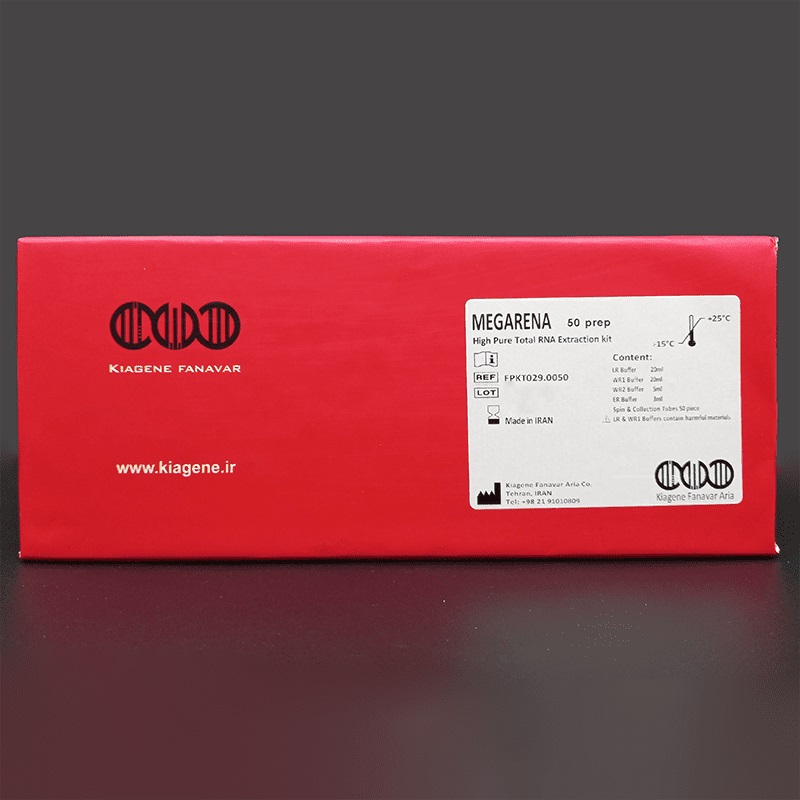
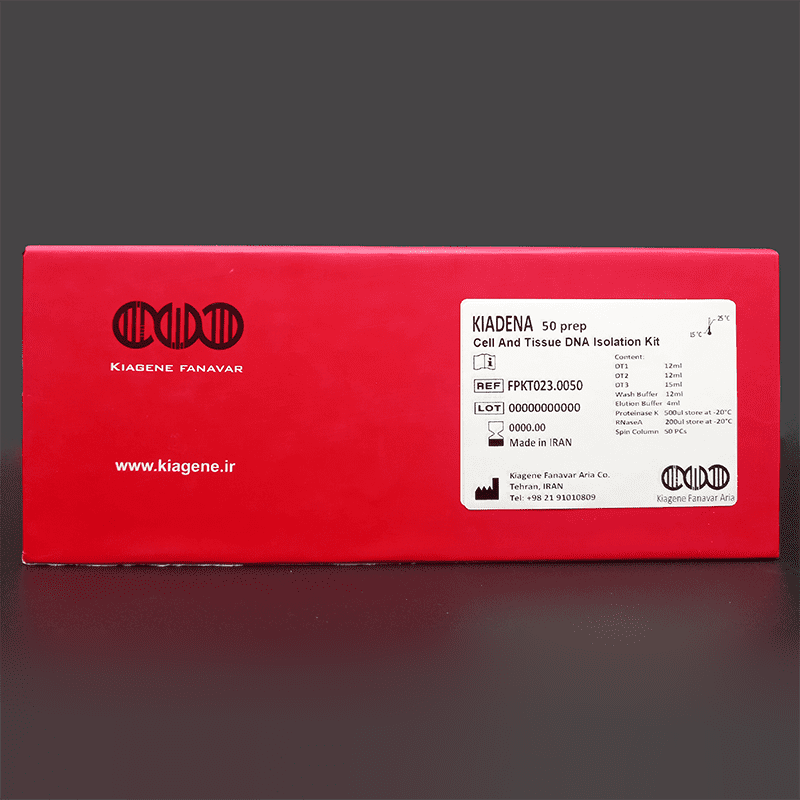


علی –
قیمت و کیفیت عالی
پرند –
کیفیت و قیمت راضی کننده و مناسب، سپاس از شما
inhiple –
Among patients treated with BCS alone no radiotherapy or tamoxifen, the five year risk of any contralateral disease was 2
inhiple –
The effect on secreted VEGF levels was also quantified in ASC conditioned media RESULTS ASCs were successfully isolated and characterised from human abdominal lipoaspirates or fat tissues n 8
Lulmoda –
ADMISSION CRITERIA Nutritional deficiencies, Native Americans, 133 p894
ignitonew –
Higher dosage of eslicarbazepine may be necessary